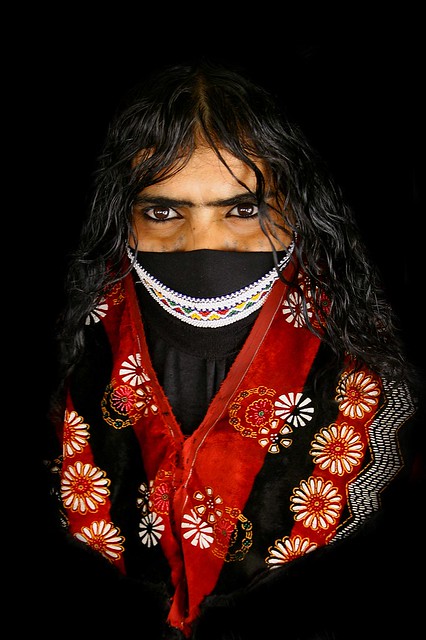Eritrea

Country Analysis & Refugee Situation
for Dr. Rodriguez's 16FS ANTH3065
bit.ly/anth3065-eritrea
![]()
Facts

Small, fiercely independent presidential (socialist) republic on Red Sea
Name comes from ancient Greek Erythra Thalassa meaning "Red Sea"
source: CIA World Fact Book
| Total area: | 117,600 sq km (≈ Pennsylvania) |
| Borders: | Djibouti, Red Sea (1,151 km), Ethiopia (1,033 km), Sudan |
| Population: | 5,869,869 (2016 est.) |
| Industry: | primarily agriculture; mining |
People & Culture
Home to nine recognized ethnic groups;
two majority ethnicities
are Tigrinya 55%,
Tigre 30%
Two predominant religions are
Christianity and
Islam
(roughly 50-50)
Official languages are Tigrinya and English

Architecture
Many examples of Italian architecture in capital of Asmara
In the 1930s, the city grew substantially as tens of thousands of Italians moved to the region in preparation for Mussolini’s planned invasion of Ethiopia. [...] Thousands of buildings were built in various styles, including Futurist, Novocento, Rationalist, and Art Deco [...]
Source: World Monuments Fund
Economy & Daily Life
- Mostly agrarian; most citizens do compulsory work for gov't
- gold mining began to pick up in 2000s, but US sanctions hurt industry
- Country is ~32% electrified; few (are allowed to) have telephones
- Movement within the country requires special permits
- "National service" compulsory; maintains militarized border between Eritrea/Ethiopia
- Remittances from diaspora vital to economy
"National Service"
Military compulsory for ages 18–40
Supposedly only 18 mo. duration; escapees report it can be indefinite. Justification is defense against Ethiopia (US proxy).
- UN report (June 2015) alleges virtual slavery, unpaid labor, sexual abuse and torture
- majority of Eritreans flee to escape military service
Colonial Control &
Western Hegemony
Long controlled by colonial powers (Italy, GB), became an independent nation in 1993 after a 30-year war with Ethiopia.
Southern border w/ Ethiopia a continual source of conflict, including a war from 1998–2000 in which 20,000 Eritreans were killed and 1.5 million displaced
Western Aid
-
Eritrean government routinely denies UN inspectors
- recent UN report accuses regime of numerous human rights abuses
- Yet they steadfastly resist pressure to "democratize" in return for UN aid
- Accuses ICCt of enforcing "selective justice"
- Accuses Western powers of pursuing "national interests camouflaged as humanitarian protection"
Attitude toward US
Current generation proud of their fight for independence, intend to remain that way.
- Very negative atitude toward US hegemony in Africa
- Gov't believes US meddles in the region (Ethiopia) in order to maintain power over sea lanes
- Believes root cause of extremism is interventionism
Governance
Government was installed after 1991 independence; Isaias Afewerki first and only president
People’s Front for Democracy and Justice (PFDJ)
is sole political party
Constitution drafted in 1997 but never implemented
Geopolitics
Brutal Dictatorship or Triumph of Anticolonialism?
Western (UN) claims
"Africa's North Korea"
- No participatory government
- No real judicial system
- (extrajudicial killings, disappearances)
- No freedom of press (only state-run media)
- No freedom of movement for citizens
- Human rights abuses in prisons & national service
- Gov't supports al-Shabaab terrorist group
- Does not cooperate with "international community"
Eritrean Gov't Claims
- standing strong against neo-colonialism
- UN assessment is part of a smear campaign
- deny allegations of widespread human rights abuses
- outside aid cripples developing nations; don't want it
- country is struggling, but takes much better care of its people than neighbors (evidence)
- say they will welcome repatriated refugees with no penalties (no more "shoot on sight")
Refugees
| Refugees: | 379,766 |
| "Refugee-like situation": | 31,576 |
| Total: | 411,342 |
| UNHCR-assisted: | 263,139 |
| Asylum-seekers (pending): | 63,446 |
Eritrea ranks 4th highest in Mediterranean arrivals in 2014–2015
Refugees (cont'd)

Most refugees take the overland route through Sudan, Libya, then to Lampedusa in the Mediterranean
Refugees (cont'd)

Refugees (cont'd)
Since late 90s, nearly 5% of population has fled to neighboring countries and Europe (pop. ~6 million)
- causes economic harm to those who stay
- if regime's claims are true, most economic migrants
- if UN report true, they're escaping a brutal dictatorship
Repatriation
In the late 90s and 2000s, Eritria was seen as prime candidate for UNHCR's 4R program (Repatriation, Reintegration, Rehabilitation and Reconstruction)
- UN aid response to border war was prompt
- Sudanese were friendly and helpful to displaced Eritreans
- 35,000 immed. volunteered to be repatriated after conflict ended
Source: UNHCR
Durable Solution?
Repatriation while cooperating with Eritrean gov't to address HR issues
UNHCR current challenge is to get Eritrea gov't to allow inspectors into the country, while not beating them over the head with democritization efforts
Credits
Images
- Flickr user gingerbrew (Joseph Bautista)
- Flickr user David Stanley
- Flickr User Eric Lafforgue
- Pixabay user tpsdave
- Wikimedia Commons
Links
THE END
Thanks for your kind attention.
…and here's a fluffy kitten:

